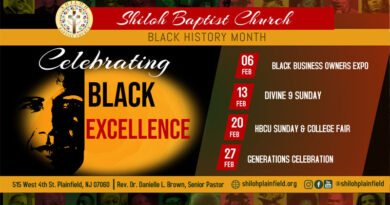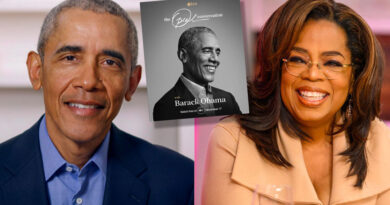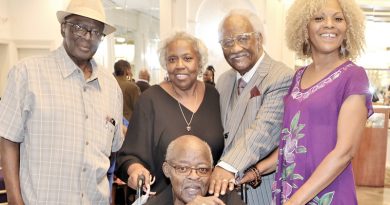The National Museum of African American History and Culture
THE SMITHSONIAN’S National Museum of African American History and Culture opened on Sept. 24 in Washington after a long journey. Thirteen years since Congress and President George W. Bush authorized its construction, the 400,000-square-foot building stands on a five-acre site on the National Mall, close to the Washington Monument. President Obama will speak at its opening dedication.
Appropriately for a public museum at the heart of Washington’s cultural landscape, the museum’s creators did not want to build a space for a black audience alone, but for all Americans. In the spirit of Langston Hughes’s poem “I, Too,” their message is a powerful declaration: The African-American story is an American story, as central to the country’s narrative as any other, and understanding black history and culture is essential to understanding American history and culture.
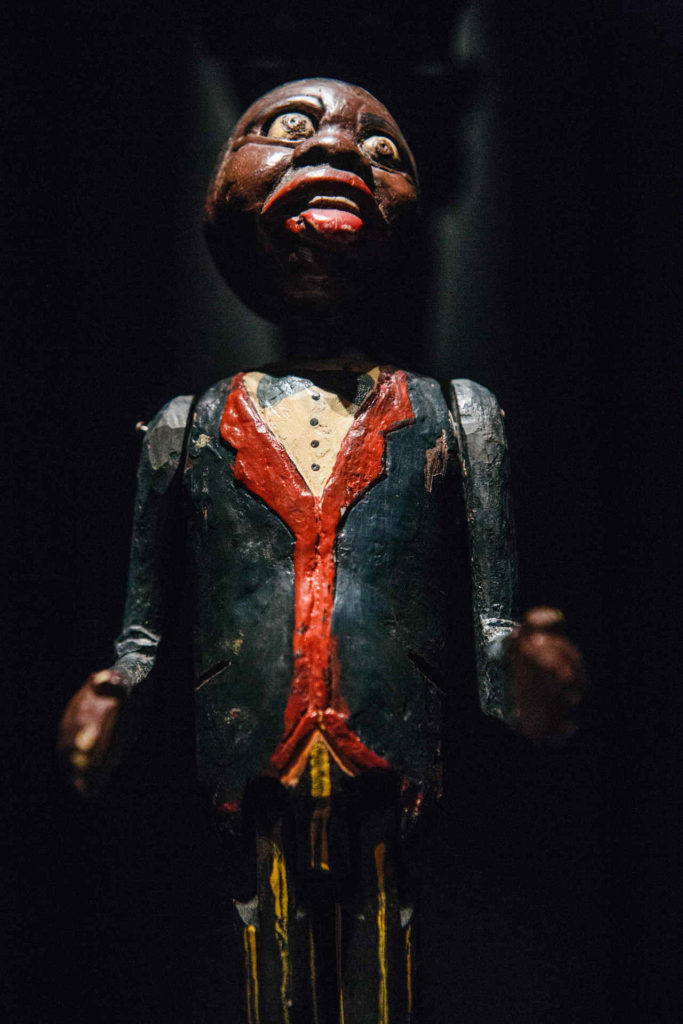
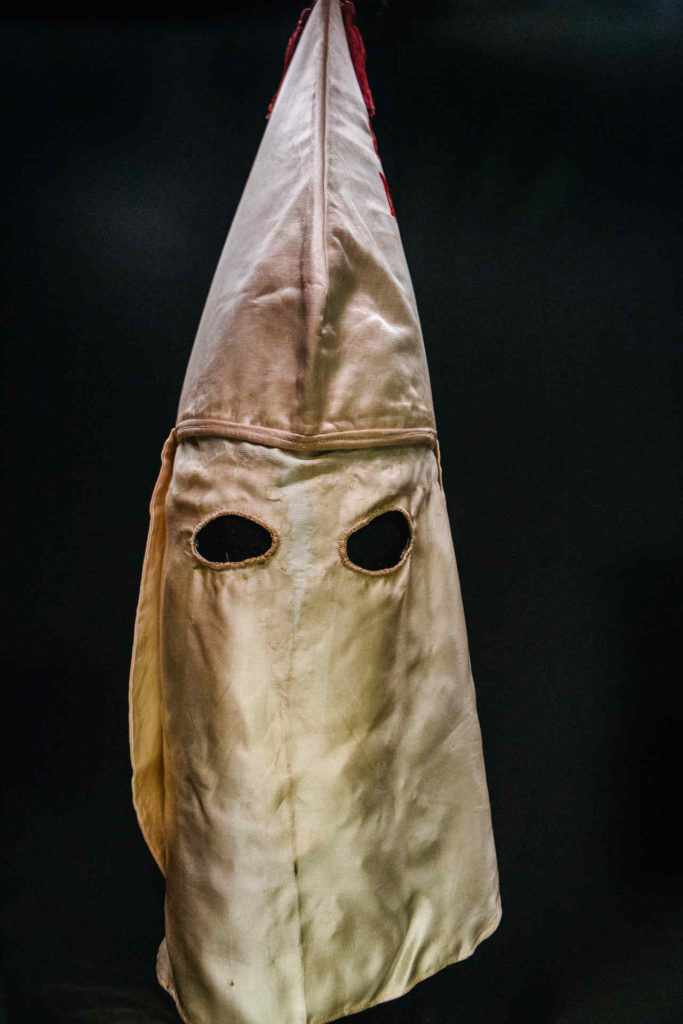
POWERFUL OBJECTS The collection includes potent artifacts, including a Ku Klux Klan hood and stereotypical representations of black Americans.
The museum says the building’s three-tiered shape evokes a traditional Yoruban crown. The exterior corona is made of 3,600 bronze-colored cast-aluminum panels. The distinctive architecture alternatively symbolizes hands lifted in prayer, in what the museum says is an expression of faith, hope and resilience.
Unusually, the museum had to start from scratch without a collection. It ran an “Antiques Roadshow”-style project in 15 cities that encouraged people to give heirlooms from their closets and attics, and yielded some of the 40,000 objects the museum now holds. About 3,500 artifacts will be on display in the opening exhibitions, many of them treasures donated by ordinary people.
Here are a few of these donors, and a look at a new museum confronted with the task of capturing both the pain and the pride of America’s past.
From Slavery to Emancipation
The museum confronts head-on America’s history of slavery and racial oppression. Yet, while memorializing suffering, the museum wants even the bleakest artifacts to have a positive message. As visitors face an auction block where slaves stood to be bought and sold, they can also imagine the strength slaves summoned to survive.


IRON BALLAST AND WOODEN SHIP PULLEY The São José, a Portuguese slave ship, sank off the coast of South Africa in 1794, killing 212 of the more than 400 slaves on board. The ballast was used to counterbalance the weight of the ship’s human cargo. During the disaster, the pulley may have been used in rescue attempts.

WHIP This type of whip was often used aboard slave ships.

THOMAS JEFFERSON AND HIS SLAVES A statue of Thomas Jefferson stands in front of a stack of bricks marked with the names of people he owned.


SHACKLES AND AN AUCTION BLOCK Exhibition text for the shackles reminds visitors that, “Like many other slaveholders, Jefferson owned his own children.” The slave auction block came from Hagerstown, Md. It was sitting on a street corner on a small patch of grass in front of a gas station.

EMBROIDERED PILLOWCASE Rose, a slave, gave this pillowcase to her 9-year-old daughter when the girl was sold. The girl’s granddaughter, Ruth, later embroidered her family’s story onto it.

KING COTTON Bales have been stacked to represent the country’s enormous economic reliance on slavery during the early years of its expansion. The bell nearby called people to and from the fields.
HARRIET TUBMAN’S SHAWL AND HYMNAL Tubman, a former slave who escaped to freedom, helped others do so through the Underground Railroad in the 1800s. As recognition of her work, Queen Victoria gave Tubman this shawl around 1897.
TUBMAN’S HYMNAL
DONATED BY CHARLES L. BLOCKSON, GWYNEDD, PA.

“Some of my relatives escaped from southern Delaware with Harriet Tubman. It [the hymnal] came to her great-niece and it was divine intervention that she donated it to me. It was a surprise to receive a letter from her attorney after she passed. I was astounded and grateful. I never knew that I would inherit her items. People said, ‘Why don’t you sell them?’ I said, ‘Why would I demean her effort and name by selling them?’ Money was the last thing from my mind. I kept them under my bed and prayed on what to do with it for three weeks and the idea came to donate the items to the new African-American museum in D.C.”
HARRIET TUBMAN has a national park named in her honor, and this year the Treasury Department announced that she would replace President Andrew Jackson on the front of the $20 bill.

CRADLE AND SHACKLES The cradle was made around 1830. These shackles are from around 1845. Both are in an exhibition on slave life and work.

NAT TURNER’S BIBLE Turner led a slave rebellion in 1831 in Southampton County, Virginia. The rebellion halted abolitionists’ ambitions and spurred harsher laws against slaves and blacks.
NAT TURNER’S BIBLE
MARK PERSON, RICHMOND, VA.

“It’s been in the family since 1912 and was kept on top of a piano, then a closet, then a safe deposit box. I look at it as symbolic, as a way of reconciliation. We have a lot of turmoil in the country and the Bible is still significant. People have their beliefs and somehow that comes out on top even after all the struggles. I met with the Turner family two or three years ago and it was a very positive experience. They said ‘the Bible is in the right place’ [in regards to the donation] and that solidified it. We knew in the family that it was priceless.”
MR. PERSON’S ANCESTORS HAD OWNED NAT TURNER AS A SLAVE. Turner is thought to have been baptized with the Bible on the Person family’s land. (The gift is courtesy of Maurice A. Person, Noah and Brooke Porter and Wendy Creekmore Porter; Mark Person spoke on behalf of the family.)


FREDERICK DOUGLASS’S CANE AND ABRAHAM LINCOLN’S INKWELL Lincoln may have used this inkwell to write parts of the Emancipation Proclamation.

STATUE OF CLARA BROWN WITH SLAVE CABIN After Brown was freed from slavery, she moved to Colorado, where she became an important community leader, helping other former slaves to settle there. The slave cabin to the right, from about 1853, had been on Edisto Island in South Carolina.
From Segregation to Today
The museum tells a history that continues to evolve. It documents the presidency of Barack Obama, but artifacts reflecting events like Black Lives Matter protests underscore persistent inequality and police brutality.
Visitors will be able to leave their own thoughts at public video booths. After such powerful displays, they can also sit in a space called the Contemplative Court to come to terms with what they have witnessed.

RED KLEAGLE KU KLUX KLAN ROBE The kleagle is a Klan officer whose role is often to recruit members. The robe was used in the years after World War I, during the second rise of the Ku Klux Klan.

THE LYNCHED The names of more than 2,200 people known to have been lynched between 1882 and 1930 line the walls of this gallery.


“WHITES ONLY” DOOR AND ROSA PARKS’S DRESS Rosa Parks was making this dress at home on the day she was arrested in 1955. The door is from a restaurant in San Antonio.

BUCKET USED BY THE REV. DR. MARTIN LUTHER KING JR. Dr. King soaked his feet in this bucket after his five-day march in 1965 from Selma to Montgomery, Ala.

EMMETT TILL ROOM This document appears near the entrance to the Emmett Till room, which will include his coffin.

ANGOLA PRISON TOWER Louisiana State Penitentiary, called Angola, occupies a former plantation. The prison is now among the largest in the country, and the museum notes, “most of the inmates are African-Americans serving life sentences.”

SEGREGATED RAIL CAR A car from the Southern Railway shows the different accommodations for white and black passengers — who paid the same fare.
Community and Culture
Visitors can tour these brighter third-floor and fourth-floor themed Culture and Community galleries without venturing into the history sections below.
Some exhibitions depict the diverse experiences of African-Americans in regions across the nation, from the birth of hip-hop in the Bronx, for example, to life in the South Carolina rice fields. Though here, too, the exhibitions refer to the oppression and discrimination that African-Americans experienced and highlight their fight to overcome segregation and bring about social change.

A VIEW OF THE WASHINGTON MONUMENT From a gallery devoted to African-Americans’ military service, visitors can see the Washington Monument on the Mall, and Arlington National Cemetery.


JOHN BROWN’S PIKE AND A CROIX DE GUERRE In 1859, John Brown led a raid on Harpers Ferry, W.Va., as part of an effort to dismantle slavery. The pike is one of about 1,000 that Brown had made to arm the slaves he hoped would join him. The Croix de Guerre is a French military honor given for exemplary acts of bravery.
CROIX DE GUERRE MEDAL
DONATED BY GINA MCVEY, OAK GROVE, CALIF.

“In 2010, I took my car to the dealership to get it fixed and there was a man sitting next to me in military uniform and we started talking. I happened to mention that my grandfather fought in World War I and was awarded the Croix de Guerre medal. He said, ‘Do you know what you have?’ I said, ‘A medal.’ He said, ‘You have history.’ It had been sitting in my parents’ home, in a steel box in an armoire, since 1968, when my grandfather died. I immediately looked it up and found out he was part of the Harlem Hellfighters. I went home, my mom pulled out the information, and I just sat there in tears. I looked at the Croix de Guerre, the Purple Heart and thought, ‘Oh my God, I had this all this time, and didn’t know anything about it.’”
MS. MCVEY’S GRANDFATHER was a member of the Harlem Hellfighters, an infantry unit of black soldiers that fought for several months as part of the French Army during World War I.


JAMES BALDWIN’S PASSPORT AND MUHAMMAD ALI’S BOXING GLOVES The museum celebrates the achievements of Baldwin, the acclaimed novelist, and Ali, the three-time world heavyweight champion.
ATHLETIC ACHIEVEMENT Even in the lighter areas of the exhibition, such as the sports displays, the museum draws a connection to civil rights.

THE BLACK POWER SALUTE Tommie Smith and John Carlos raised black-gloved fists when the United States national anthem was played during their medal ceremony at the 1968 Olympics in Mexico City.


CARL LEWIS’S OLYMPIC MEDALS, JESSE OWENS’S CLEATS Owens wore the cleats at the 1936 Olympics in Berlin, where he won four gold medals.


JACKIE ROBINSON’S BAT AND JERSEY, ALTHEA GIBSON’S RACKET Like Robinson, Althea Gibson broke barriers in sports, becoming the first African-American woman to win a Wimbledon tennis championship.
ALTHEA GIBSON’S TENNIS RACKET
DONATED BY DON FELDER, SOUTH ORANGE, N.J.

“I was at her mom’s house visiting with family members who were still residing at the house. They had some pieces I was interested in and I told them I wanted to give them to the museum. I was elated that I was able to obtain some things, so that we could keep her legacy alive. The more I could find, the better story we could tell of Althea Gibson, of who she was, what she did. They [the Smithsonian] came to my office in South Orange, New Jersey, with gloves and they went through photographs, letters, her writings that I had, the tennis racquet and immediately walked over to a FedEx shipping store near my office and shipped what they could. Althea was an incredible bowler, golfer, tennis player. She was an all-around athlete.”
MR. FELDER is Gibson’s second cousin. In 1971, Gibson was inducted into the International Tennis Hall of Fame.
FROM THE JEFFERSONS TO WILL SMITH One culture exhibition is devoted to African-Americans’ influence on film, television, theater and dance.


JIMI HENDRIX’S VEST, MARIAN ANDERSON’S JACKET AND SKIRT Anderson, the acclaimed classical singer, wore the outfit to perform at the Lincoln Memorial on Easter Sunday, 1939, after being barred from the Constitution Hall in Washington because of her race.
MARIAN ANDERSON’S JACKET AND SKIRT
DONATED BY GINETTE DEPREIST, PORTLAND, ORE.

“I know that she was scared to death. That’s one thing that she kept telling us. Here is this young woman coming from Europe full of hope and sees that she is the object of racial division and found herself in front of 75,000 people on a Sunday morning. By nature, Aunt Marian was very soft-spoken. She really wanted throughout her career to be known as the woman with the golden voice more than the woman who started this movement, and so I don’t think she was very comfortable in that role.”
MS. DEPREIST’S HUSBAND, James, was Anderson’s nephew. Anderson, the first African-American soloist to perform at the Metropolitan Opera, received the Presidential Medal of Freedom and a Grammy lifetime achievement award.


LOUIS ARMSTRONG’S TRUMPET AND LEAD BELLY’S GUITAR The guitar is displayed alongside Lead Belly’s prison pardon. Lead Belly, the folk and blues musician, was released from prison in 1925 after writing a song to the Texas governor.
From the building’s upper levels, visitors can view the Washington Monument, Arlington National Cemetery, the White House and the National Mall — a symbolic reminder, officials say, that the museum is a lens on the broader American experience.
